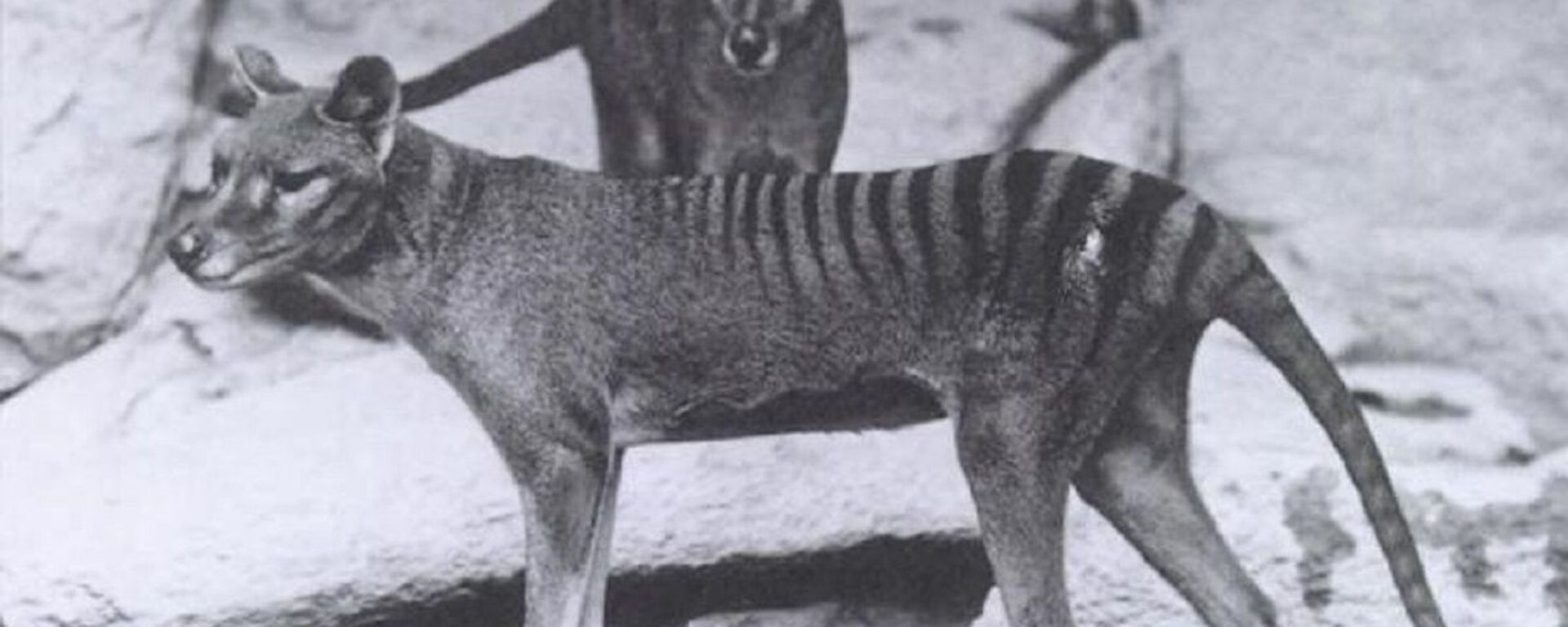https://sputnikglobe.com/20221205/lost-remains-of-last-known-tasmanian-tiger-found-at-museum-1105049275.html
Lost Remains of Last Known Tasmanian Tiger Found at Museum
Lost Remains of Last Known Tasmanian Tiger Found at Museum
Sputnik International
The thylacine, better known as the Tasmanian tiger, was considered a ferocious Australian predator until its disappearance in the early 20th century. The... 05.12.2022, Sputnik International
2022-12-05T12:42+0000
2022-12-05T12:42+0000
2022-12-05T12:42+0000
world
tasmanian tiger
australia
museum
https://cdn1.img.sputnikglobe.com/img/07e6/0c/05/1105048438_0:77:2048:1229_1920x0_80_0_0_69587a147ae3bac5e759dc68ca668ae0.jpg
The remains of the last-known Tasmanian tiger, which for the past 85 years were thought to be lost, have been found hidden in the closet of an Australian museum, UK media reported.The last Tasmanian tiger died in captivity in Hobart zoo in 1936. Its body was transferred to the Tasmanian Museum and Art Gallery, but the remains were lost there. For a long time, it was thought that they had been discarded.Recently, museum officials discovered that the remains had been in the museum all along, but had not been catalogued properly. The staff first discovered an unpublished taxidermist's report, prompting a review of the museum's collections. The missing specimen was found in a cupboard in the museum's education department.The Tasmanian tiger exhibit is now on display in the Tasmanian Museum and Art Gallery.Tasmanian tigers were among the largest marsupial animals of prey. The animal formerly lived on the island of Tasmania as well as on the Australian mainland. The numbers of this species declined, presumably as a result of competition from dingoes and hunting by humans.
https://sputnikglobe.com/20210224/new-claim-about-extinct-tasmanian-tiger-sighting-shot-down-by-experts-media-says-1082172201.html
australia
Sputnik International
feedback@sputniknews.com
+74956456601
MIA „Rosiya Segodnya“
2022
News
en_EN
Sputnik International
feedback@sputniknews.com
+74956456601
MIA „Rosiya Segodnya“
Sputnik International
feedback@sputniknews.com
+74956456601
MIA „Rosiya Segodnya“
lost, tasmanian tiger, remains, found, museum
lost, tasmanian tiger, remains, found, museum
Lost Remains of Last Known Tasmanian Tiger Found at Museum
The thylacine, better known as the Tasmanian tiger, was considered a ferocious Australian predator until its disappearance in the early 20th century. The last-known Tasmanian tiger died in 1936.
The remains of the last-known Tasmanian tiger, which for the past 85 years were thought to be lost, have been found hidden in the closet of an Australian museum, UK media reported.
"For years, many museum curators and researchers searched for its remains without success, as no thylacine material dating from 1936 had been recorded," Robert Paddle, who published a book entitled The Last Tasmanian Tiger in 2000 on the extinction of the species, said as quoted by UK media.
The last Tasmanian tiger died in captivity in Hobart zoo in 1936. Its body was transferred to the Tasmanian Museum and Art Gallery, but the remains were lost there. For a long time, it was thought that they had been discarded.

24 February 2021, 12:39 GMT
Recently, museum officials discovered that the remains had been in the museum all along, but had not been catalogued properly. The staff first discovered an unpublished taxidermist's report, prompting a review of the museum's collections. The missing specimen was found in a cupboard in the museum's education department.
The Tasmanian tiger exhibit is now on display in the Tasmanian Museum and Art Gallery.
Tasmanian tigers were among the largest marsupial animals of prey. The animal formerly lived on the island of Tasmania as well as on the Australian mainland. The numbers of this species declined, presumably as a result of competition from dingoes and hunting by humans.





